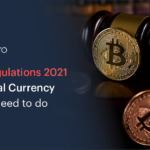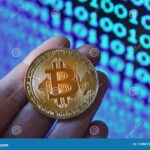How to Safely Store Your Cryptocurrency: Best Practices for Security is a crucial topic in today’s digital age, where the value of cryptocurrencies continues to rise. As more individuals venture into the world of digital assets, understanding how to protect these investments becomes increasingly important. This overview highlights the essential strategies and methods to securely store cryptocurrencies, ensuring that your hard-earned funds remain safe from potential threats.
In this discussion, we will explore various storage options, the significance of security practices, and common pitfalls to avoid. By the end, you’ll have a clearer understanding of how to effectively safeguard your digital assets, empowering you to navigate the cryptocurrency landscape with confidence.
In today’s fast-paced world, the importance of effective communication cannot be overstated. Whether in personal relationships, the workplace, or even casual interactions, the ability to convey thoughts and ideas clearly is essential. As we navigate through various modes of communication—be it verbal, non-verbal, written, or digital—the challenges can often seem daunting, particularly when we are faced with differing perspectives and unique cultural backgrounds.To understand effective communication better, we must first recognize its components.
At its core, communication involves a sender, a message, and a receiver. The sender encodes a message, which is then transmitted through various channels. The receiver decodes the message, ideally achieving a shared understanding. However, this process can be disrupted by barriers such as noise, language differences, or emotional states, leading to misunderstandings.One significant barrier to effective communication is the lack of active listening.
Active listening is more than just hearing words; it involves fully engaging with the speaker, showing empathy, and providing feedback. This skill is crucial in establishing rapport and trust, which are foundations of any healthy relationship. In practice, active listening requires a conscious effort to focus on the speaker, resist the urge to interrupt, and clarify any points of confusion.
By doing so, we not only enhance our understanding but also make the speaker feel valued and respected.Another vital aspect to consider is the role of non-verbal communication. Often, our body language, facial expressions, and tone of voice convey more than our spoken words. For instance, a warm smile and open posture can make a person feel welcome and at ease, while crossed arms and a frown might signal disinterest or hostility.
Being aware of our own non-verbal cues, as well as those of others, can significantly improve our ability to connect and communicate effectively.In a multicultural world, sensitivity to cultural differences in communication styles is paramount. Different cultures may have varying norms regarding eye contact, personal space, and even the expressions of agreement or disagreement. For example, while direct eye contact is often seen as a sign of confidence in some Western cultures, it may be considered confrontational or disrespectful in others.
To navigate these differences, one must approach communication with an open mind and a willingness to adapt. This adaptability not only fosters better understanding but also enriches our interactions with diverse individuals.Technology has also transformed the landscape of communication, offering both advantages and challenges. While digital platforms enable us to connect with people across the globe instantly, they can also lead to misinterpretations due to the absence of non-verbal cues.
Misunderstandings often arise in text-based communications, where tone and intent can be easily misconstrued. To counteract this, we should strive for clarity and precision in our written communications, using appropriate language and considering how our message may be perceived by the recipient.Moreover, the rise of social media has changed the way we share information and express ourselves. While it offers a platform for self-expression and connection, it also presents challenges such as oversharing, cyberbullying, and the spread of misinformation.
Developing a critical eye for the information we consume and share is essential in this digital age. Engaging in respectful discourse, verifying facts before sharing, and being mindful of our online presence are all vital components of responsible digital communication.In the workplace, effective communication is crucial for teamwork and productivity. Clear communication fosters collaboration and ensures that all team members are on the same page regarding goals and expectations.
Regular check-ins, feedback sessions, and open lines of communication can help create a culture of transparency and trust. Furthermore, leaders play a pivotal role in modeling effective communication practices, setting the tone for how team members interact with one another.Conflict resolution is another area where effective communication skills are invaluable. Disagreements are a natural part of any relationship, be it personal or professional.
However, how we handle these conflicts can determine the strength of our relationships. Approaching conflict with a mindset of collaboration rather than competition allows for constructive dialogue. Utilizing “I” statements to express feelings without placing blame and actively seeking solutions that benefit all parties can turn potential confrontations into opportunities for growth and understanding.In conclusion, effective communication is an essential skill that enhances our interpersonal relationships, boosts productivity in the workplace, and promotes understanding in a diverse world.

By honing our active listening skills, becoming aware of non-verbal cues, adapting to cultural differences, and navigating the challenges of digital communication, we can foster deeper connections and create a more harmonious environment. Whether in personal interactions or professional settings, the commitment to improving our communication skills can lead to more meaningful relationships and a better understanding of the multifaceted world in which we live.
As we strive to become better communicators, let us remember that at the heart of every interaction is the desire to be understood and to understand others.



